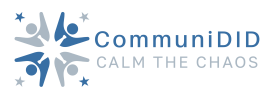You Don’t Have to Fully Integrate: An Alternative to Final Fusion
(Summary) Integration in DID and OSDD is often misunderstood as final fusion — but there’s more to it. Drawing on Dr. Dan Siegel’s work, this video explains integration as two key processes: differentiation (recognizing parts as distinct) and linkage (building connections between them). You’ll see why connection — not necessarily fusion — is the real path to healing, and how systems can choose the level of integration that feels right for them.
As someone with OSDD, or DID, you are no doubt familiar with the idea of integration. Which many people think of as a final fusion into one unified personality. Doctor Dan Siegel talks about integration a way that I think might be new to you and which I think is much more compelling. Doctor Siegel is a psychiatrist and neuroscientist who works with DID and who talks about two components of integration, which are differentiation and linkage.
Now to be clear, he’s not talking about these two components solely in terms of DID and OSDD. But they definitely apply. Let me explain, differentiation, for our purposes, means having awareness of different parts or members of the system. If you, as the everyday life part, experience the emotions of other parts as yours, then there’s no differentiation and if there’s only one part, it can’t be linked to anything else.
But maybe you argue with me and say, hey, I’m aware of three other alters in my system. Great. With the ability to differentiate between yourself and the three other parts, you will be able to form connections between them. In fact, my guess is you’ve already created at least some connections. But more than likely, there are multiple parts you are currently unaware of, or largely unaware of and because you experience those parts as you you are not differentiated with them and you cannot form connections with parts that you are unaware of.
But you might say, So what? Why should I want to form those connections anyway? Well, connections result in the healing of your OSDD or DID. OSDD and DID are conditions where parts of you had to become independent from the rest of you. Each of these parts experiences events as a separate individual. Now we all have parts, but people with DID or OSDD have parts with few or no connections between them whereas people without DID or OSDD have parts but they are connected so that the individual experiences the parts as themselves as an integrated personality. So this person can experience the desire to go out dancing that night while at the same time, they also have a desire to stay home and watch a movie. Two different and conflicting desires that the person experiences as theirs rather than as separate individuals with a these preferences.
So healing OSDD and DID results from forming linkages or connections between the various parts of your system and, of course, unlike the idea of fusion, this type of integration has a wide range of possibilities. Some systems might choose to become aware of each other and then form enough connections they can communicate and cooperate as a system. That’s great! Other systems might choose to develop even more connections so that they begin to experience each other as all part of the same individual while retaining their own unique differences. And that’s great too. Each system should get to decide the amount of integration that works for them.
